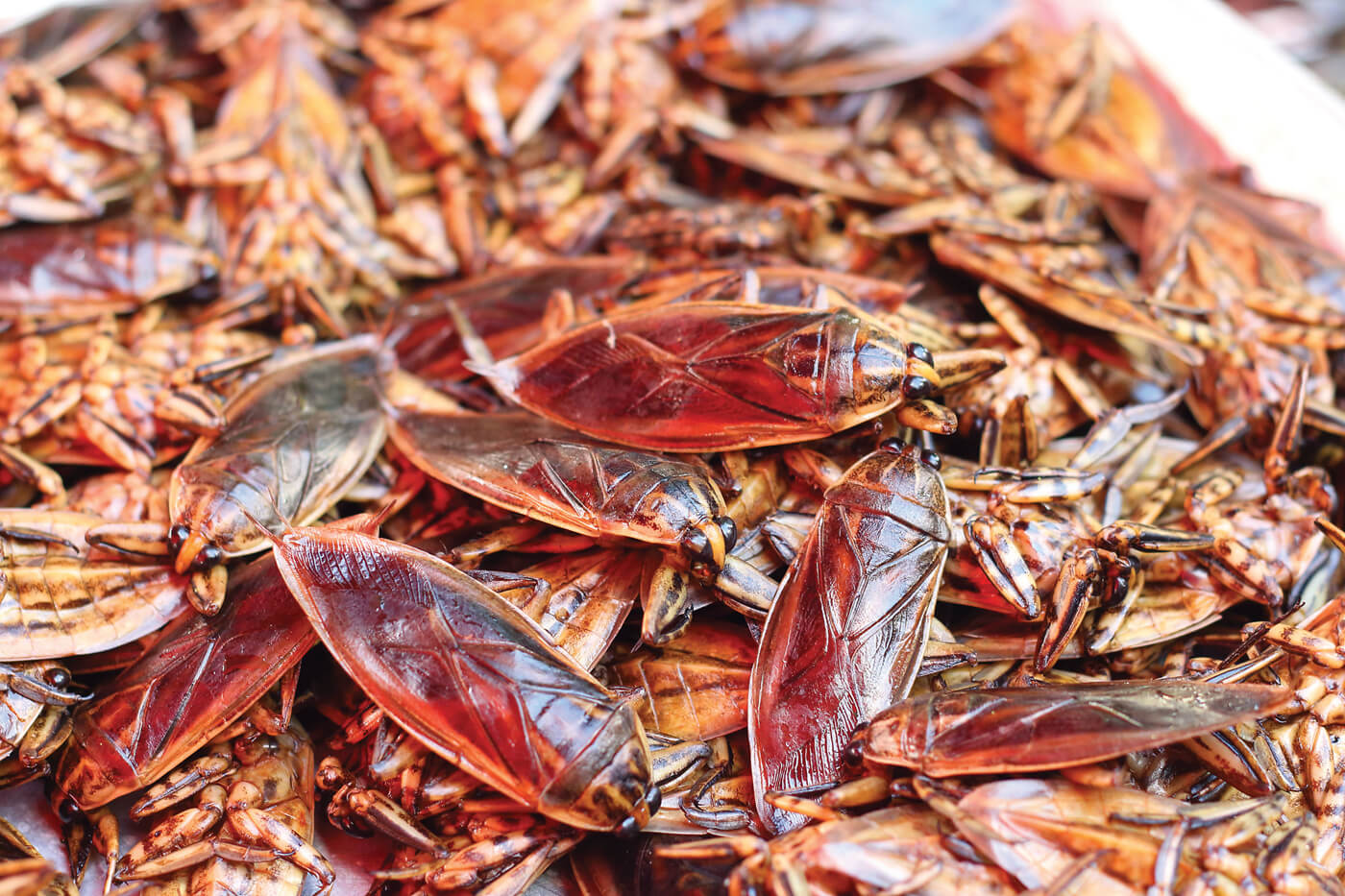If you can’t catch an animal in a trap, hook a fish from the stream or even find an edible plant nearby, there are still thousands of things around you that you can eat. In a survival scenario, bugs are dinner.
Eating insects is completely normal for much of the world and, in a catastrophic situation, gathering these tiny morsels could be the difference between life and death. Bugs are also frequently eaten in different parts of the world, including caterpillars, termites (Africa), crickets (Asia), bees, ants (Asia), locusts (Mexico), Wasps (Japan) and tarantulas in South America. Insects can also be good for you.
They are often low in carbohydrates, full of protein, high in vitamin B, iron, zinc and the nutritional value is comparable to meat sources such a chicken and beef. However, you shouldn’t eat something you found dead and you should try to keep them as fresh as possible. Experts says you can eat most insects raw but it is safer if they are cooked by boiling them in water or roasting them in a fire. As a rule, avoid insects that appear hairy or fuzzy, give off a bad smell or have bright colors including red, yellow and orange.
Bugs that are brown, green and black are often better choices. Flies, mosquitoes, and ticks may carry diseases. In urban areas, bugs exposed to pesticides or snails that eat rat droppings might carry deadly parasites. Here’s our guide to the various delicacies you might use to stave off starvation in an end-of-the-world situation.
Grasshopper
You can eat grasshoppers raw or cooked. They have a lot of protein and calcium and you can snap off the legs and wings before eating. Twist off the head if you want to avoid a crunch. There are many varieties of edible grasshoppers.
Scorpions
Found in the Southwest states, scorpions can be eaten both raw and cooked. Roast until it is blackened. Be sure to take off the tail, stinger and poison sac first.
Cockroaches
Don’t go for the cockroaches you find in your home. However, the hundreds of hard-shelled beetles found outside will work. They move fast but when you catch them, grill them until blackened. Remove the shell and legs.
Ladybugs
These might be cute but they can also provide a small amount of protein.
Bees and Wasps
Remove the stinger, wings and legs. If you can manage it try tying a silk thread to a caught bee and following the trail to the nest.
Termites
Usually eaten raw, you can find termites near dead wood. They have a vague nutty flavor. Remove the wings.
Ants
Most ant varieties can be eaten except for stinging fire ants. Boil them to make them taste better and try to find larvae for larger quantities.
Praying Mantis
The taste of a praying mantis can vary greatly when eaten raw, often with a wooden flavor. You can find them in early summer or late spring and they are relatively easy to catch. To cook them, get rid of the heads, forearms and legs.
Cicadas
They only pop up every 17 years, but the bodies of Cicadas are very juicy and might taste like corn. Take off the sharp head, legs and wings and look for them in the mornings.
Crickets
Use your sense of hearing to zero in on these insects at night. Remove the head and legs before eating and cook them over a fire.
Editor’s note: A version of this article first appeared in the October 2015 issue of American Survival Guide.


